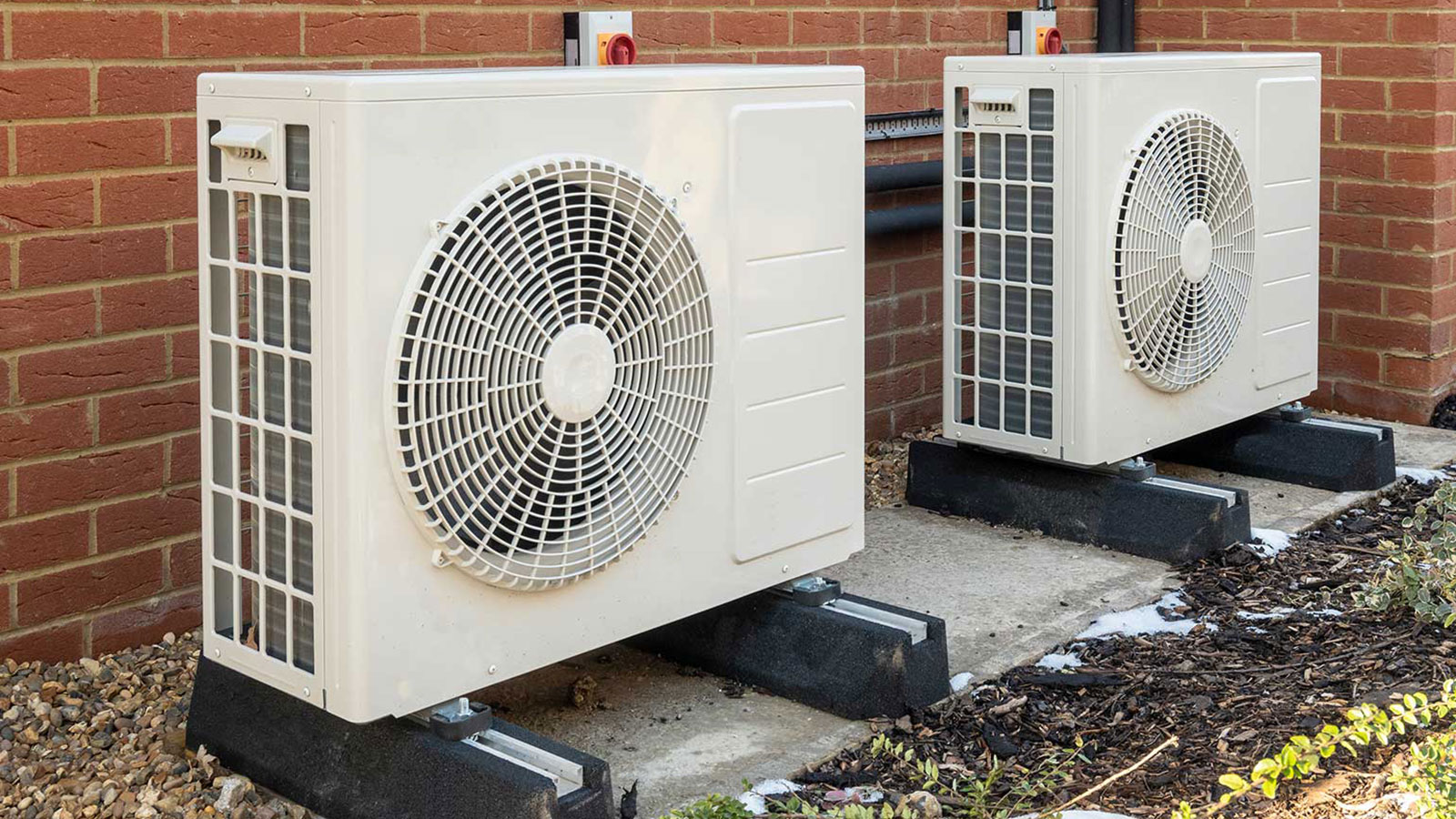Humble Heat Pump Defeats Evil Empire!

Hyperbole? Yes, but they can play a role in reducing reliance on oil and deliver sizeable reductions in CO2 emissions. Recently President Biden invoked the Defense Production Act (DPA) to accelerate the domestic production of heat pumps and solar panels. It’s fantastic news because it sends a message that the government considers clean energy a strategic asset at home.
Bill McKibben, leader of 350.org, says, “The DPA can get American manufacturers to start producing electric heat pumps in quantity, so we can ship them to Europe where they can be installed in time to dramatically lessen Putin’s power.”
Sounds important, right? But like many people (including many architects), you may have no idea what a heat pump is. Solar panels are easy to grasp: sun hits object and creates electricity—but how do you even pump heat? It’s not like water. And they don’t just heat a house; they can cool it, too.
A better name would be Heat Transfer Device because that’s how they work by transferring heat in the air. Even when it’s cold outside, there is still heat in the air to make warm air inside. The engineering is complex:
“…as the outside air passes across the first heat exchanger…vapor is compressed concentrating the heat…the hot vapor flows to the second heat exchanger…the liquid refrigerant then passes through an expansion valve…blah, blah, blah… ready to start the whole cycle once again!”
If that didn’t make it clear, here’s a video to better explain it: How a Heat Pump Works: This Old House.
What makes heat pumps so valuable is that they are super energy efficient. A heat pump can transfer 300% more energy than it consumes (a high-efficiency gas furnace is about 95% efficient). Plus, they use electricity, not fossil fuels, including solar panels. “Even if your heat pumps are powered on coal power, it’s still a big upgrade,” says Duncan Gibb, lead analyst for heating and buildings at REN21, which advocates for renewables. There are also geothermal heat pumps that use heat stored in the ground.

Photo credit: Rebecca Solnit. Her own heat pump.
Installing a heat pump does not mean you need to have those unsightly wall registers (called Ductless Mini-Splits) in every room in your house (beware, some installers push Mini-Splits). Instead, you can use the same ducts that carry air from your existing oil furnace. What you’ll need to do is add an outside unit (the size of a large suitcase) and an air handler inside where your furnace used to sit. Installation options include ceiling cassettes, and a qualified installer can provide recommendations. Having your architect at that meeting is good because many heating/cooling guys consider Mini-Splits fine art.
Many Seattleites may think they don’t need air-conditioning (and for a long time, I’ve advised against it since we have such moderate summer temperatures), but a few years ago, I started recommending heat pumps due to smoke from forest fires. If you have children or underlying health issues, it is critical to have healthy indoor air when polluted air envelopes our city.
How much will this cost? A ducted air-source heat pump is usually less than $25,000, including installation. It’ll pay for itself within five years if you’re paying $5,000 annually to feed your furnace oil.
More critical, heat pumps are a way to fight climate change. There’s a sense that we can’t do anything to make a difference, but we need to rewrite that narrative. Our actions can also have an impact on global politics. I’ll let Bill McKibben have the last word: “If we can suppress demand here by giving people efficient technology, it will help drive down the windfall that rising oil prices have provided Putin.”
Have an Upcoming Project?
My firm offers full architectural services from helping clients to determine their needs to being your advocate during construction. I enjoy working with clients who love design and want to be part of a collaborative process.
Email me at contact@sheriolson.com to set up a time to talk about your upcoming project.
Additional Articles
(206) 720-5510 | contact@sheriolson.com

